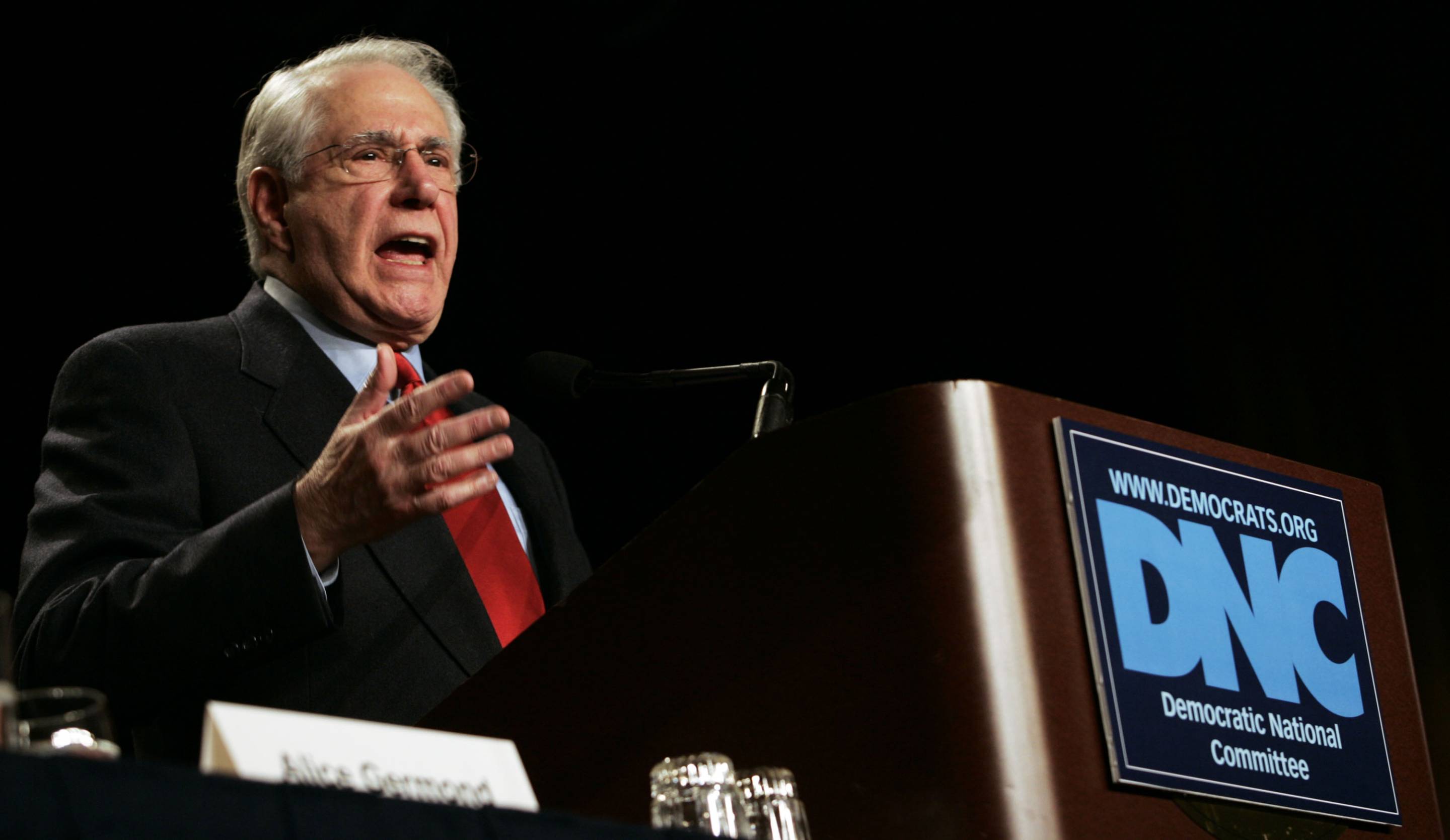

Republican strategists claimed that she was an independent maverick, just like McCain. Palin was a fresh face on the national scene, and she had a reputation of being able to work well with Democrats in the state legislature during her short tenure as governor of Alaska. His selection of Sarah Palin as his vice-presidential candidate was designed to emphasize change. However, his age and his long service in Washington may have led many voters to doubt that he would change Washington very much. He argued that his record proved that he, not Obama, would be better able to provide effective bipartisan leadership. McCain tried to rely on his established image as a Republican maverick to argue that he could work with members of both parties in Congress, pointing to many instances when he had done so during his long career as a senator. Therefore, he emphasized his credentials as someone who would change Washington, and he attempted to distance himself from President Bush as much as possible. McCain recognized that change was part of the national political mood in 2008 and that the Bush administration was extremely unpopular. John McCain's campaign themes and strategies These financial resources allowed the Democrats to run numerous campaign ads and to fund an aggressive campaign organization in each targeted state. With his superior resources, Obama was able to target a large number of competitive states, including many that were carried by Bush in 2004, such as Ohio, Florida, Iowa, Colorado, New Mexico, Nevada, and Virginia. There was criticism of Obama for being the first presidential candidate to reject public funding for the general election, but it did not seem that many voters were troubled by this decision. He was extremely successful in doing so, which provided him with vastly superior resources to McCain, who accepted public funding. One aspect of this effort involved rejecting the public subsidies that were available for his presidential campaign, instead raising his own funds. He relied on just such an effort to capture the Democratic nomination, and he extended that effort into the presidential campaign, especially in the competitive states. Therefore, part of his campaign strategy was to assure voters that he was capable of handling the job-that he had the knowledge, the judgement, and the temperament to be a successful president.įinally, Obama's campaign strategy included a strong effort to establish effective campaign organizations throughout the nation. However, it also left him open to the criticism that he lacked the experience to be president. The fact that Obama had not been part of the Congress for many years made it easier for him to present himself as an agent of change. On foreign policy and national security, he favored reducing troop levels in Iraq as quickly as possible and placing more emphasis on winning the war in Afghanistan. On the domestic side, Obama proposed: (a) major health care reform (b) policies to reshape the economy, especially regarding energy consumption and environmental protection and (c) increased taxes for top income earners, combined with tax cuts for lower-income individuals. Obama's theme of change also encompassed changes in public policy. The Obama strategy was to equate McCain and Bush as much as possible. Moreover, McCain's policy positions in many cases were similar to those of President Bush, which provided another basis for linking the two individuals. Even though he was not part of the Bush White House, and even though he did not always support the Bush administration, McCain nevertheless would be linked in the eyes of many voters because he represented the same party as the president. The link was based in part on the simple fact that McCain was the Republican nominee. Thus, Obama believed that voters were not only unhappy with the Bush administration but that they were also unhappy with the nature of politics in Washington.įor this theme to be effective, Obama had to link McCain to the failures of the Bush administration. Excessive influence of lobbyists in the legislative process should be replaced by a greater concern with the public good.

Divisive partisanship should be replaced by a more cooperative post-partisanship approach. Second, it meant a change in the way that Washington worked. First, it meant a change in the White House, replacing the failed Bush presidency with a Democratic presidency.

Obama's overarching campaign theme was the need for change. Campaign Themes, Strategies, and Developments Barack Obama's campaign themes and strategies


 0 kommentar(er)
0 kommentar(er)
